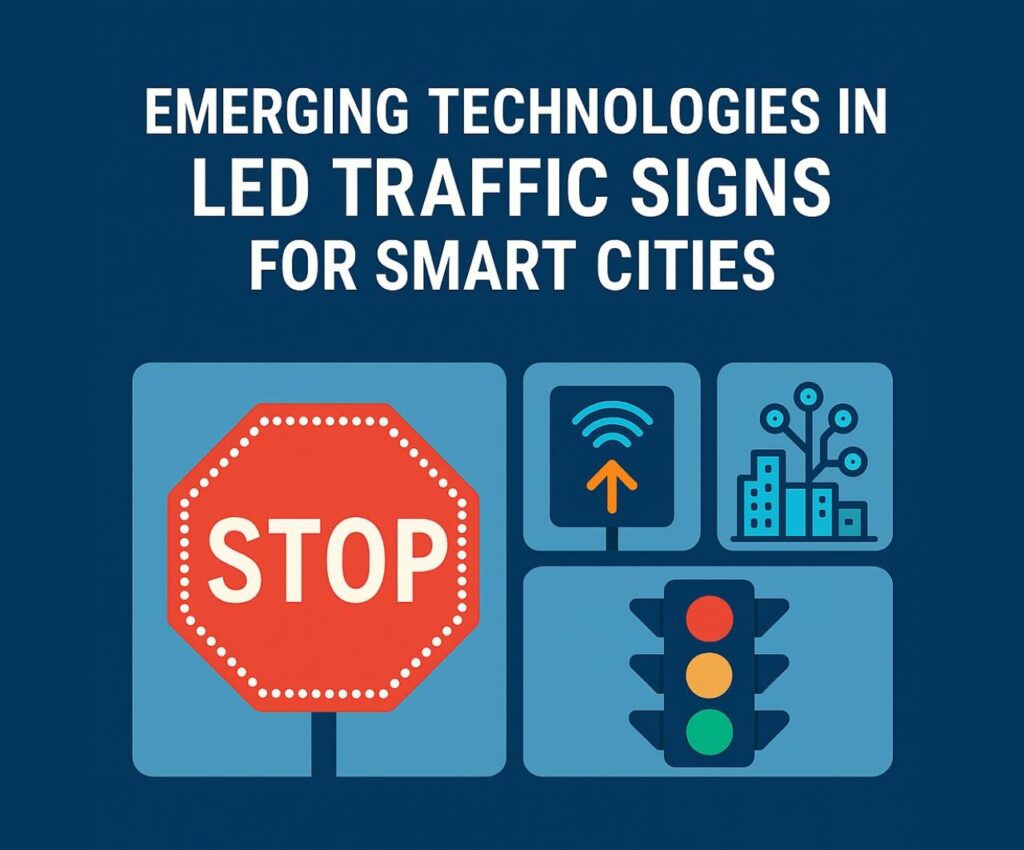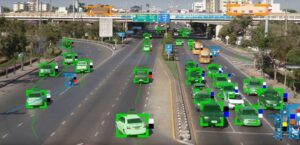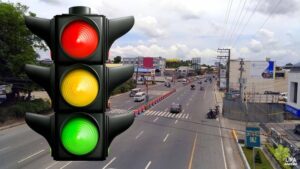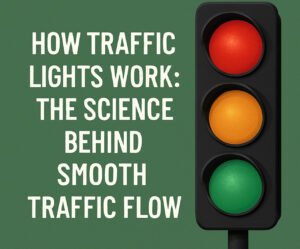Smart cities are transforming how we move, communicate, and stay safe on the roads. At the heart of this revolution is the adoption of intelligent infrastructure, especially in traffic management. Among the standout innovations are LED traffic signs, LED flashing traffic sign systems, and responsive LED traffic warning signs. These emerging technologies aren’t just replacing old signs with brighter ones—they’re becoming dynamic tools in urban planning, public safety, and real-time communication. Know more..
Why LED Technology Matters
LED (light-emitting diode) technology has fundamentally changed signage. It consumes less energy, lasts longer, and offers better visibility than traditional incandescent or neon lights. For traffic management in smart cities, this means signs that:
- Require minimal maintenance
- Stay visible in harsh weather
- Operate on solar power or energy-efficient grids
LED traffic signs are more than upgrades—they’re foundational to adaptive traffic systems that react to real-world conditions.
1. Intelligent Messaging with Programmable LED Displays
One of the most exciting developments is the use of programmable displays in LED traffic signs. Unlike static signs, these can show multiple messages based on time, traffic conditions, or emergencies.
A city might display speed limits during school hours and switch to weather warnings in a storm. In construction zones, LED flashing traffic sign units alert drivers to changing lane patterns or reduced speeds.
These signs are integrated with central traffic control systems and IoT networks. When an accident occurs, LED traffic warning signs can automatically activate, displaying messages like “Crash Ahead” or “Detour in Place.”
This level of responsiveness is critical for reducing secondary accidents and ensuring smoother traffic flow.
2. Solar-Powered and Off-Grid Functionality
One of the biggest hurdles for traditional signage has been energy dependency. LED traffic signs are now commonly equipped with solar panels, allowing them to function independently of the electrical grid.
This is especially useful in rural or underdeveloped areas, and in emergency situations like natural disasters when power is limited. These LED flashing traffic sign units stay operational even when the rest of the infrastructure goes down.
Some advanced systems also include energy storage batteries, ensuring the sign stays illuminated through cloudy days or nighttime hours. Solar-powered LED traffic warning signs also reduce the environmental footprint of traffic systems.
3. Integration with AI and Data Analytics
Smart cities run on data, and LED traffic signs are becoming a key part of that ecosystem. By linking signs with traffic cameras, GPS systems, and real-time analytics platforms, cities can ensure more precise and context-aware messaging.
Imagine a stretch of road where frequent speeding occurs. AI systems can detect high-speed activity and trigger a LED flashing traffic sign urging drivers to slow down. In icy conditions, LED traffic warning signs could appear suddenly at key junctions, advising caution without needing manual input from authorities.
AI not only triggers signage but also helps evaluate their effectiveness. If drivers consistently slow down in response to a specific sign placement, the data confirms that strategy’s success. This makes future deployments more efficient and budget-friendly.
4. Enhanced Visibility and Nighttime Safety
Visibility is the most obvious yet critical benefit of LED traffic signs. LEDs offer much brighter illumination than traditional bulbs, making signs more readable at night, during fog, or in heavy rain.
LED flashing traffic sign units are often designed to grab attention quickly—flashing red or amber lights can dramatically reduce accidents at dangerous intersections or pedestrian crossings.
Studies have shown that LED traffic warning signs improve driver compliance and reaction times, especially in low-visibility conditions. In school zones, flashing signs during pickup and drop-off times keep children safer. For truck routes or tunnels, bright, color-coded LED displays can warn of clearance heights or hazardous material restrictions.
5. Dynamic Warnings for Road Work and Temporary Events
Road work, festivals, parades—cities are constantly in motion. Traditional signs don’t cut it for dynamic environments. That’s why mobile LED traffic signs are seeing explosive growth.
Mounted on trailers or temporary structures, these signs offer:
- GPS-triggered activation
- Pre-scheduled messages
- Manual overrides via mobile apps
A construction team can update messages on a LED flashing traffic sign in real-time as work zones shift. During events, traffic control can redirect vehicles using animated arrows or warning symbols displayed on LED traffic warning signs.
This flexibility helps reduce confusion and increase public safety during unpredictable scenarios.
6. Wireless Control and Remote Updates
One major feature in modern LED traffic signs is the ability to update content remotely. Using cellular networks or Wi-Fi, city traffic departments can push updates instantly without deploying field crews.
This makes it easy to:
- Activate evacuation warnings
- Adjust speed limits for changing weather
- Display Amber Alerts or Silver Alerts
With remote control, each LED flashing traffic sign becomes part of a responsive, city-wide safety network. Cloud-based management platforms also let city officials monitor sign status, battery levels, and performance.
For large cities managing hundreds of LED traffic warning signs, remote access drastically improves efficiency and reduces operational costs.
7. Customization for Specific Use Cases
No two intersections are exactly alike. That’s why manufacturers now offer modular and customizable LED traffic signs that adapt to specific needs:
- School zones with alternating speed limits
- Toll booths with dynamic fare displays
- Bridge and tunnel entrances with real-time height warnings
Each use case might require unique animations, flashing sequences, or bilingual displays. The LED flashing traffic sign has become a canvas for highly specialized messaging.
LED traffic warning signs can be enhanced with motion sensors that activate only when vehicles approach, reducing light pollution and conserving energy.
8. Eco-Friendly and Cost-Effective
Cities want more than performance—they want sustainability. Compared to legacy signage, LED traffic signs are:
- 80% more energy-efficient
- Up to 5x longer-lasting
- Made with recyclable materials
Because LED flashing traffic sign units use modular parts, maintenance involves swapping out small components rather than replacing entire signs. Over time, this leads to major cost savings.
The environmental benefits are equally clear. Less frequent replacements mean less waste, and solar-compatible designs minimize fossil fuel reliance.
The Road Ahead: Smarter, Safer Streets
The rise of LED traffic signs is no longer just about brightness—it’s about intelligence. As smart cities scale, their infrastructure must match. This means building systems where each LED flashing traffic sign and every LED traffic warning signs contribute to a safer, more responsive urban environment.
With real-time control, energy efficiency, and data integration, these technologies aren’t just improving visibility—they’re changing how we move through cities.
From programmable messaging and AI-driven alerts to solar independence and remote access, the evolution of LED traffic signs shows no sign of slowing down. And that’s a bright future we can all see clearly.
Whether you’re a city planner, a traffic systems engineer, or simply a driver commuting daily, understanding these emerging technologies means staying one step ahead on the road to smarter cities.





